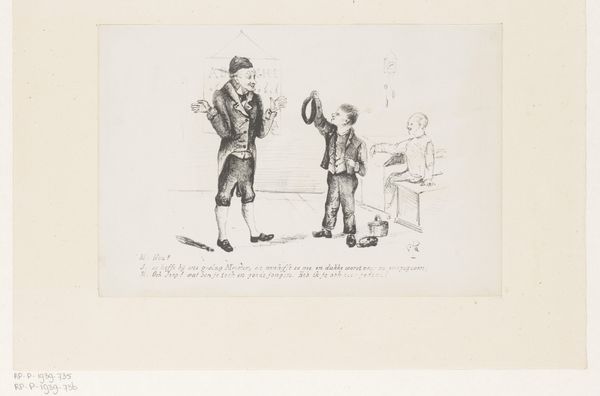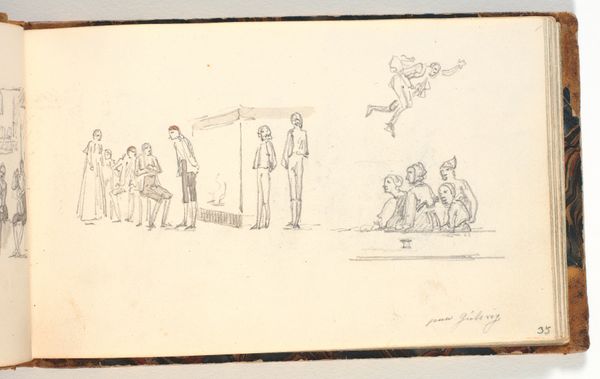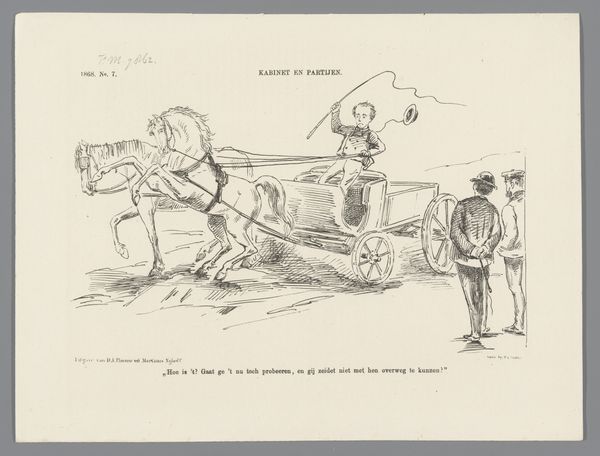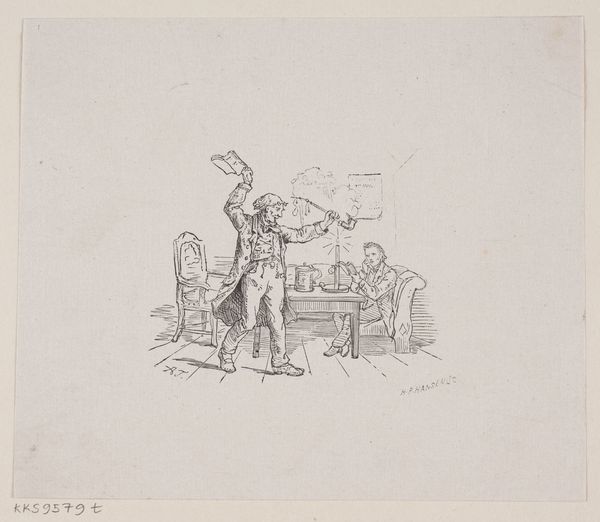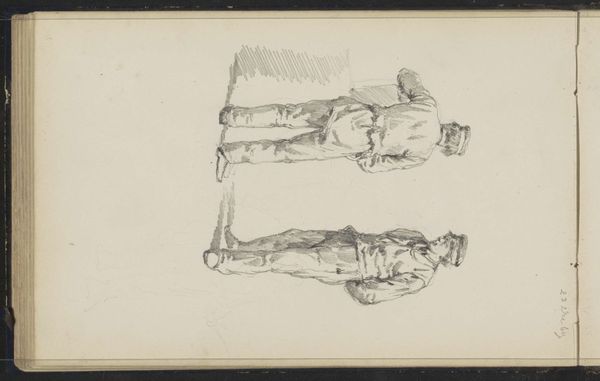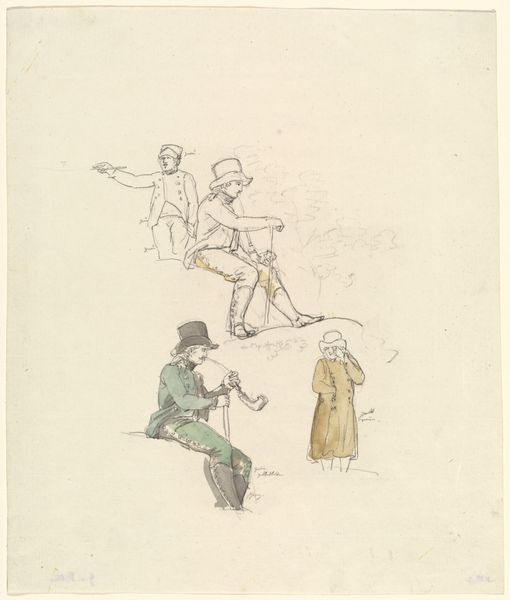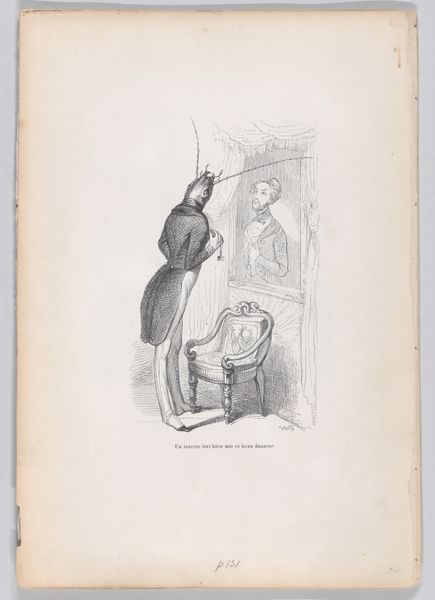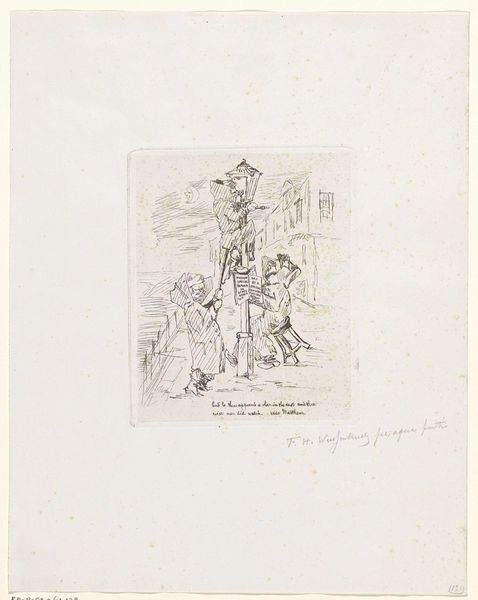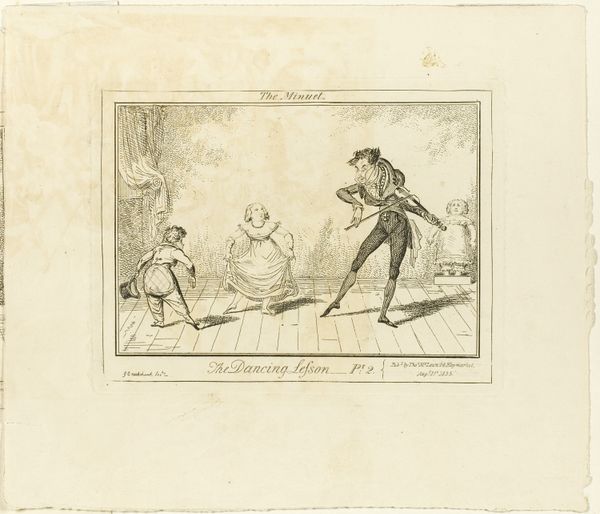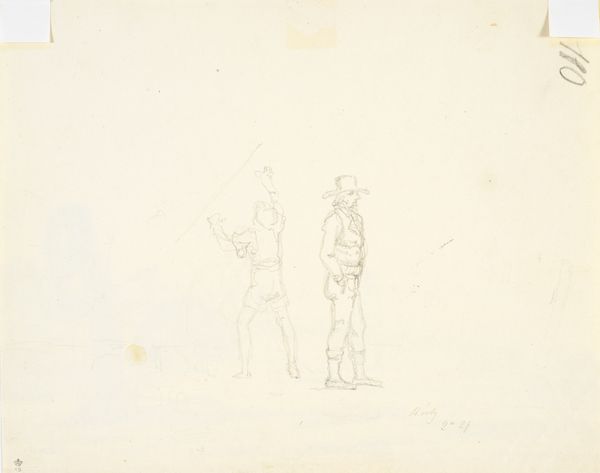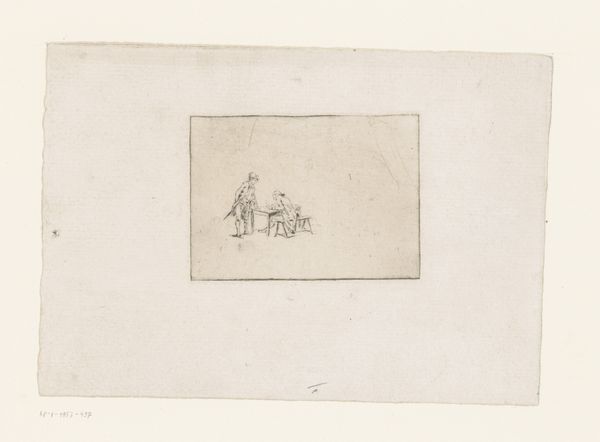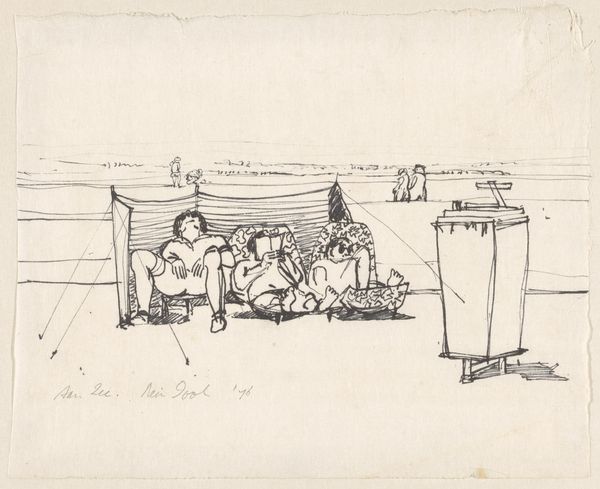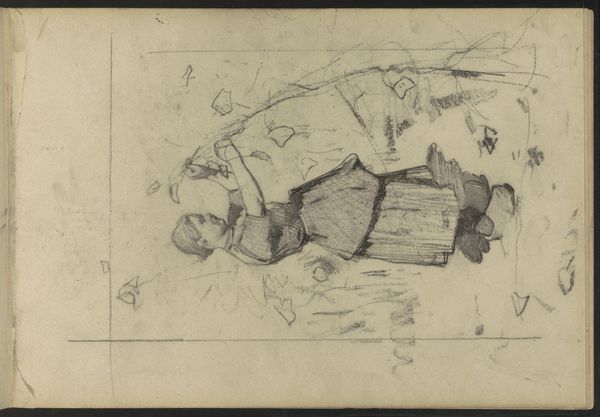
drawing, pencil, pen
#
pencil drawn
#
drawing
#
narrative-art
#
pencil sketch
#
figuration
#
pencil
#
pen
#
pencil work
#
genre-painting
#
academic-art
#
realism
Dimensions: height 174 mm, width 254 mm
Copyright: Rijks Museum: Open Domain
Editor: So this is "Leraar straft te laat komende jongen," or "Teacher Punishing a Late Boy" by Jeremias Adriaan Adolf Schill, made sometime between 1864 and 1902. It's a pen and pencil drawing. It's interesting how spare it is, yet it suggests such a clear, almost universally recognizable scene of childhood transgression. What jumps out at you when you look at it? Curator: The drawing style certainly contributes to the sense of looking back at a scene that resonates through time. Notice the alphabet chart behind the teacher? The letters themselves are a potent symbol here. This image evokes the start of learning, the imposition of rules, the potential for shame—a whole complex of emotions tied to entering society, a microcosm of power dynamics. It feels almost archetypal. Does the teacher's gesture strike you as harsh or paternal? Editor: That’s a great question! At first, I thought he seemed angry, but his hand on the boy's head almost looks… comforting? Or maybe resigned? It's definitely ambiguous. Curator: Ambiguity is key. Is it correction, or humiliation? Think about how those small figures and elements - the chart, the tailcoat, the other child seemingly oblivious - become weighted with so much significance through their arrangement. The scene acts like a stage for us to reflect on authority, innocence, and memory itself. We imbue the work with so many levels of readings from our experiences. Does that unlock any new reflections for you about your school experiences? Editor: Absolutely, thinking about those symbols makes it so much more personal. I appreciate seeing it not just as a historical image, but as something that still speaks to our experiences and understandings of learning and discipline today. Curator: Exactly! And those symbols continue to influence cultural understandings of power, order, and youth. The pencil and ink almost seem to invite annotation across eras, each person subtly adding a personal meaning to this image through its legacy.
Comments
No comments
Be the first to comment and join the conversation on the ultimate creative platform.
